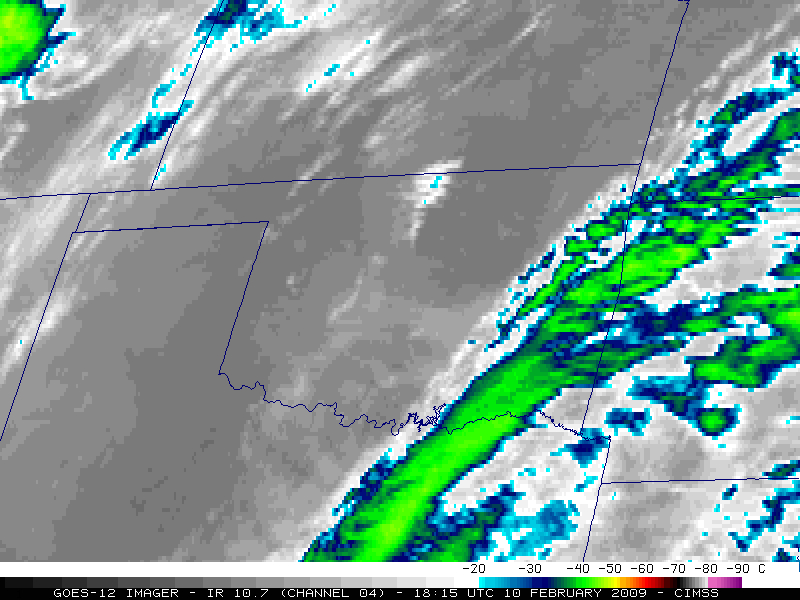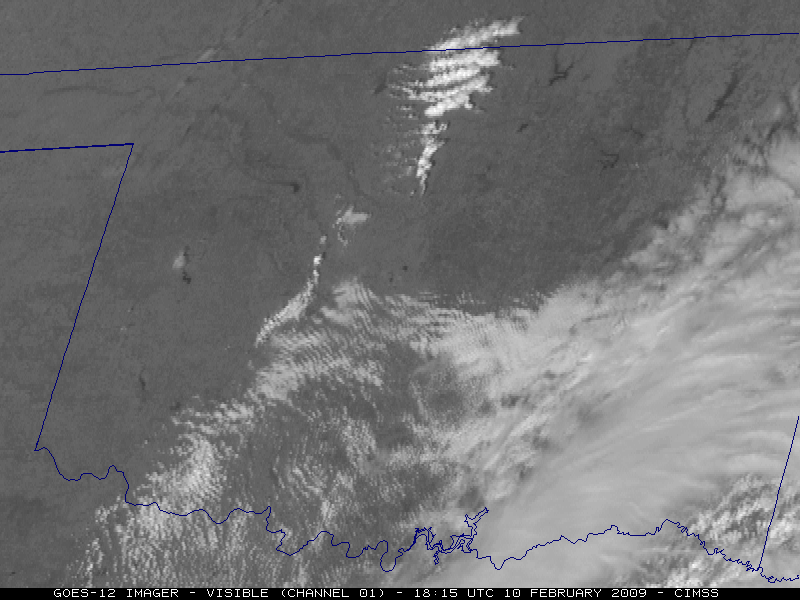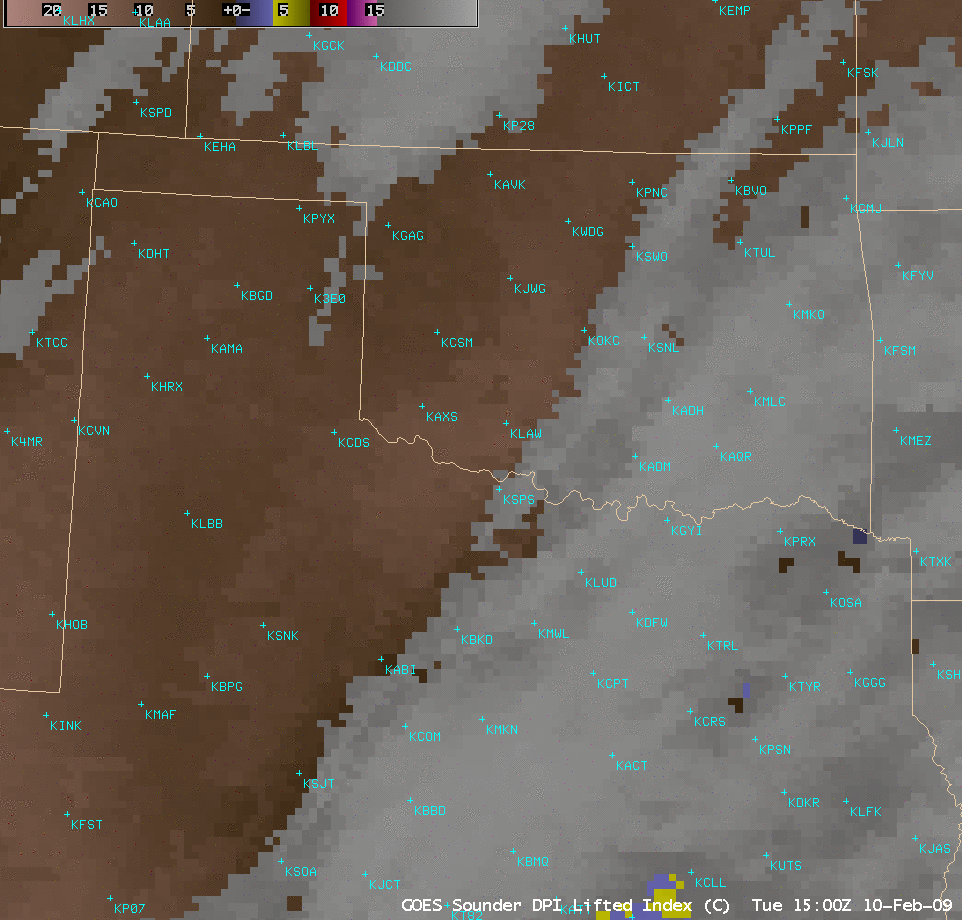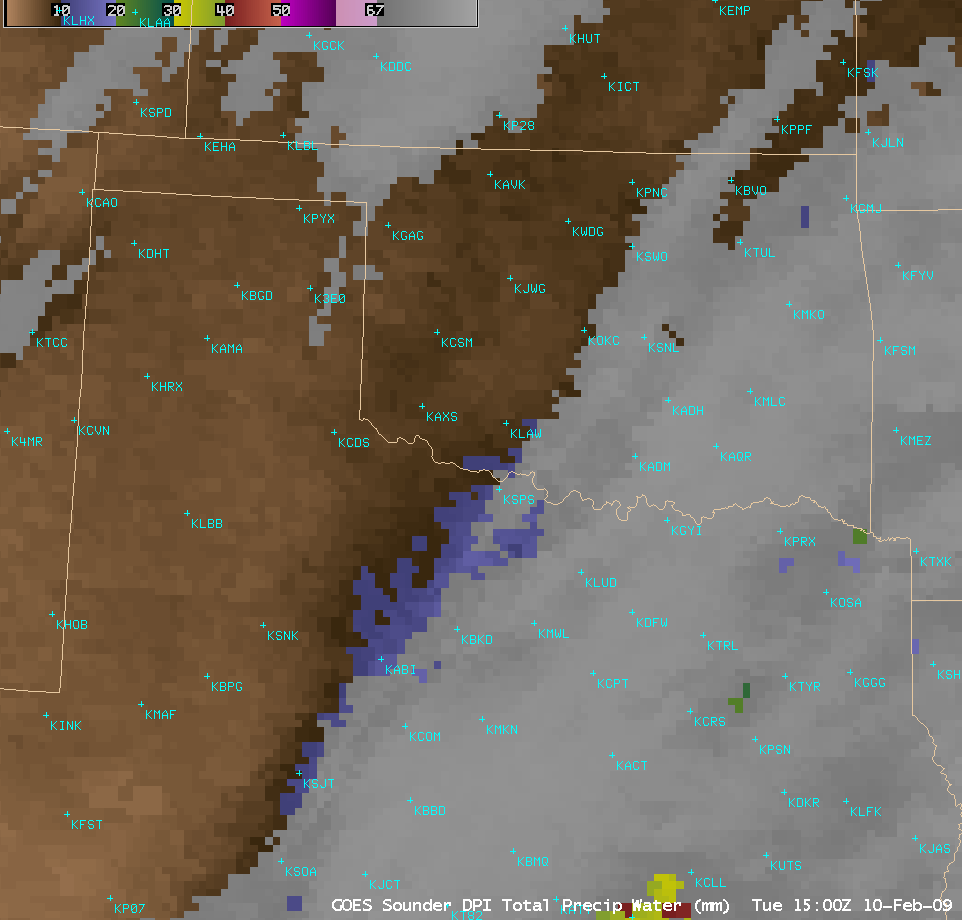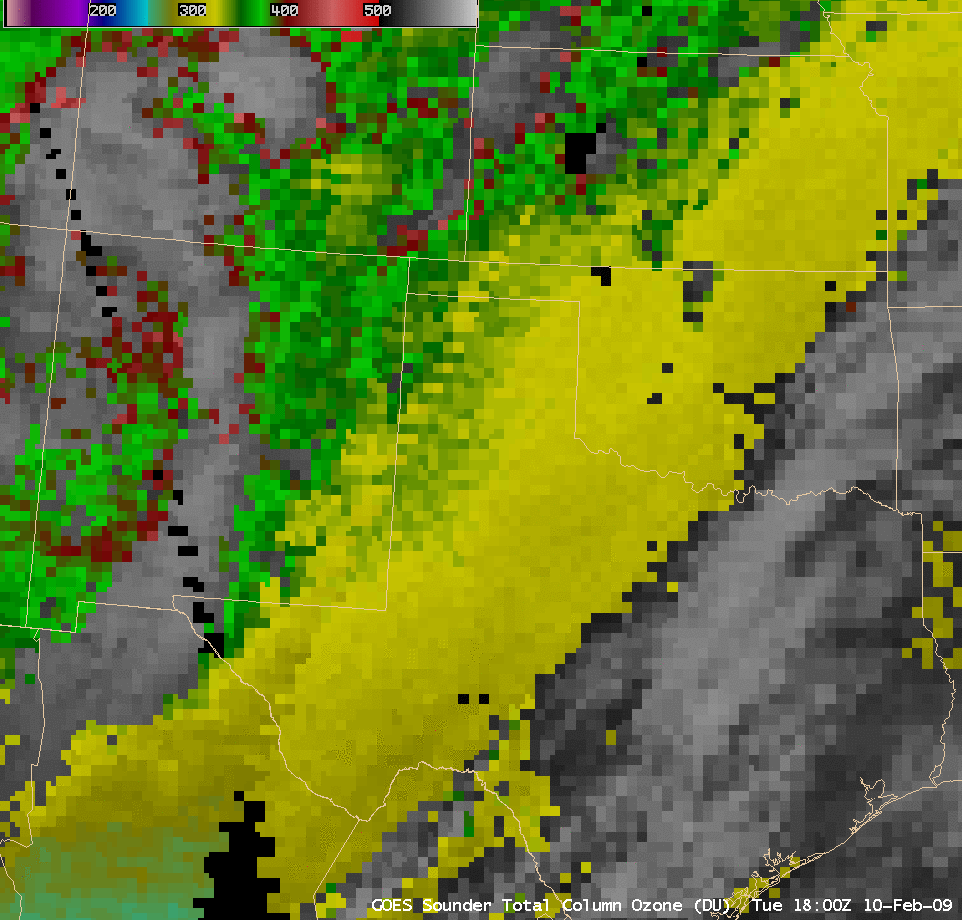Tornado outbreak in Texas and Oklahoma
The first tornado-related fatalities of the 2009 severe weather season occurred during a tornado outbreak that affected parts of Texas and Oklahoma (SPC storm reports) on 10 February – 11 February 2009. GOES-12 10.7 µm IR images (above; QuickTime animation) showed the development of multiple lines of severe convection during the afternoon and evening hours of 10 February, with large areas of cloud top temperatures in the -55º to -65º C range (orange to darker red color enhancement).
The tornado fatalities occurred in the town of Lone Grove — located just west of Ardmore in far southern Oklahoma — around 01:30 UTC (7:30 pm local time). A comparison of GOES-11, GOES-12, and GOES-13 IR images around that time (below) demonstrated the effect of “parallax”, which leads to the apparent displacement of the cold “overshooting top” cloud feature due to varying satellite view angles. Using GOES-11 (positioned over the Pacific Ocean at 135º West longitude), the coldest overshooting top IR pixel (with an IR brightness temperature of -63º C, darker red color enhancement) was located about 5 km southeast of Ardmore (KADM). Using GOES-12 (positioned over the Atlantic Ocean at 75º West longitude), the coldest IR pixel (also -63º C) was located about 22 km west of Ardmore. Finally, the GOES-13 satellite (positioned at 105º West longitude) had a more direct viewing angle, and therefore less of a parallax error: the coldest IR pixel (-64º C) was located 12 km northwest of Ardmore — this places the “overshooting top” a few km to the north of Lone Grove, which would be the expected location.
A closer view using the GOES-12 visible channel images (below; QuickTime animation) shows the development of the initial line of storms over Oklahoma. The storm that produced the fatal tornado at Lone Grove formed to the east of the main line of storms, and began to appear just south of the Oklahoma/Texas border near the end of the animation.
AWIPS images of the GOES sounder Lifted Index (LI) derived product (below) showed that the atmosphere was destabilizing during the afternoon hour, with LI values over Oklahoma as low as -8º C by 19:00 UTC and -13º C by 21:00 UTC.
In addition, the GOES sounder Total Precipitable Water (TPW) derived product images (below) indicated that there was a northward surge of moisture across Oklahoma during the hours leading up to convective development, with TPW values exceeding 20 mm (0.8 inch) by 18:00 UTC, and TPW values exceeding 30 mm (1.2 inches) by 21:00 UTC.
A strong upper-level trough was moving eastward across the southern Rocky Mountains region, and the GOES sounder Total Column Ozone derived product images (below) depicted elevated values of ozone associated with this trough. Total Column Ozone values of 350-425 Dobson Units (green to red color enhancement) often correspond to a lowering of the dynamic tropopause and/or the presence of a potenial vorticity (PV) anomaly — and the approach of the trough and the associated PV anomaly likely helped to produce an environment that favored upward vertical motions on a synoptic scale across the southern Plains region late in the day on 10 February.


